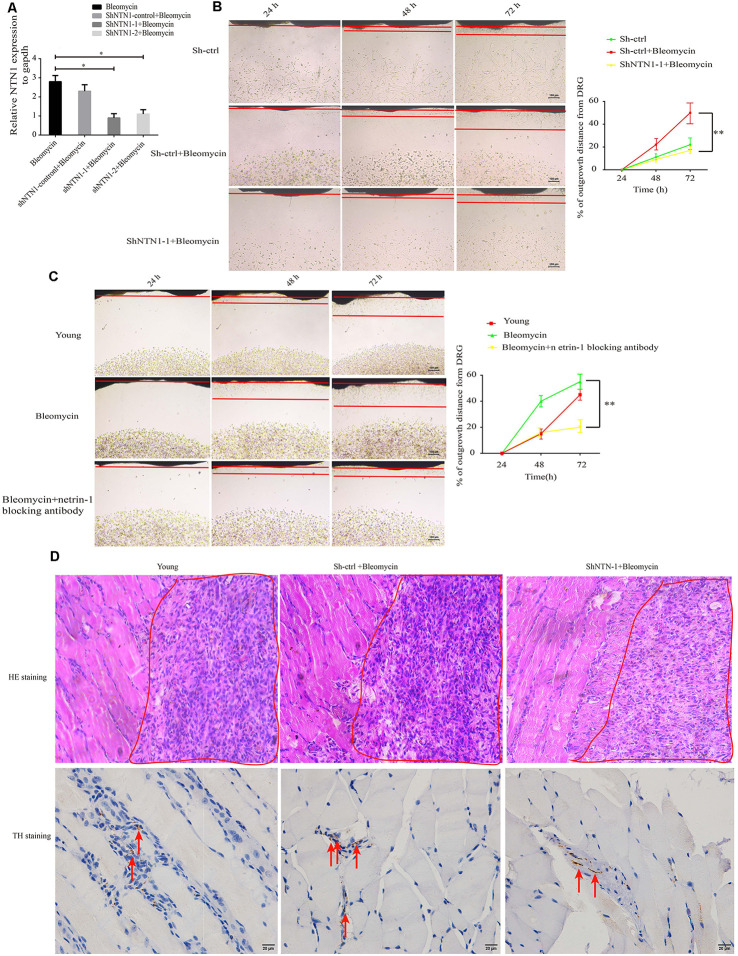Figure 5.
Knockdown or blockage of netrin-1 impedes SFs outgrowth, both in vitro and in vivo. (A) Quantitative reverse transcription polymerase chain reaction (RT-qPCR) analysis was used to determine the efficiency of NTN1 knockdown by a short hairpin RNA (shRNA), *P < 0.05. (B) DRG cocultures with the following: short hairpin control-treated 1 × 107 2BS fibroblasts (sh-ctrl 2BS); 1 × 107 2BS fibroblasts with bleomycin-induced premature senescence; and 1 × 107 2BS fibroblasts with bleomycin-induced premature senescence that had been treated with short hairpin RNA targeting NTN1 (shNTN1 2BS+ bleomycin), **P < 0.01, scale bar, 100 μm. (C) DRG cocultures with the following: young mouse embryonic fibroblasts (MEFs); MEFs with bleomycin-induced senescence; and netrin-1 blocked MEFs with bleomycin-induced senescence, **P < 0.01, scale bar, 100 μm. (D) Upper panel: hematoxylin and eosin (HE) staining of the subcutaneous tissue transplanted with treated 1 × 107 young 2BS fibroblasts, 1 × 107 sh-ctrl 2BS fibroblasts with bleomycin-induced premature senescence, and 1 × 107 sh-NTN-1 2BS fibroblasts with bleomycin-induced premature senescence; the red box indicating the eosin (HE) staining of the transplant site of the indicated 2BS fibroblasts, scale bar, 50 μm, n = 3. Lower panel: IHC of tyrosine hydroxylase (TH) of the subcutaneous tissue at the site at which the indicated 2BS fibroblasts were transplanted for the identification of SFs, scale bar, 20 μm, n = 3.

